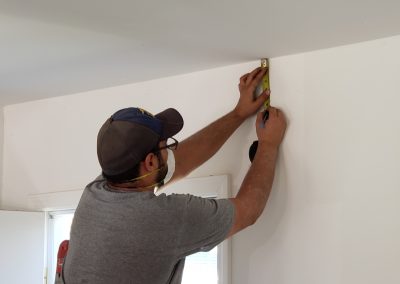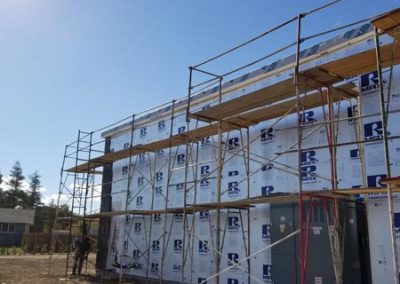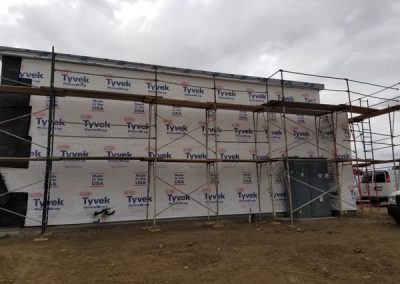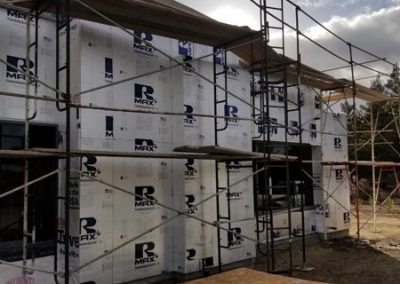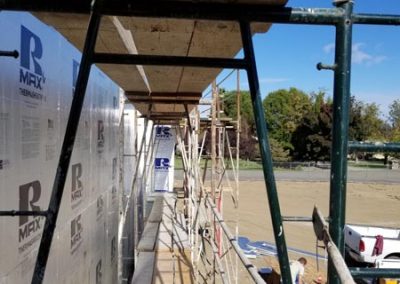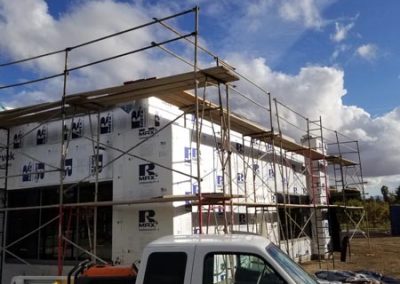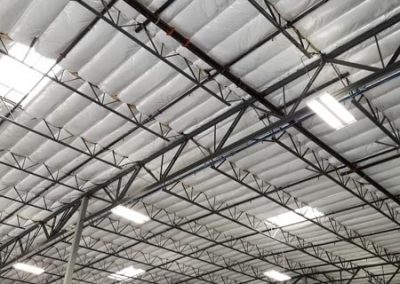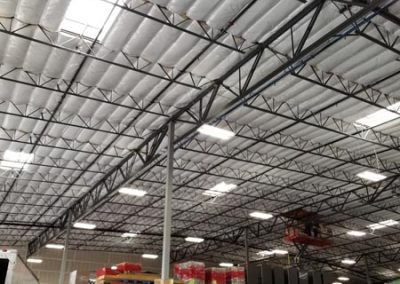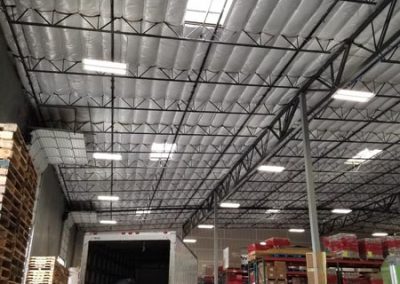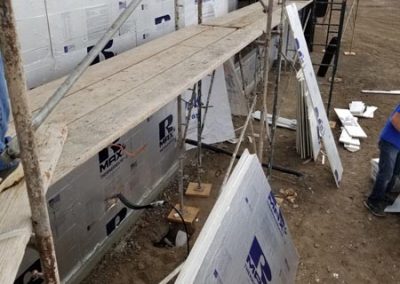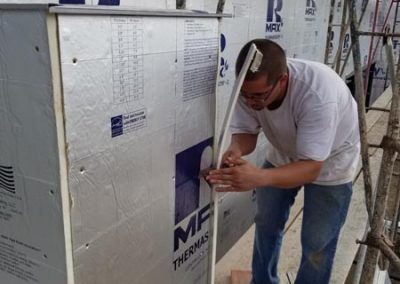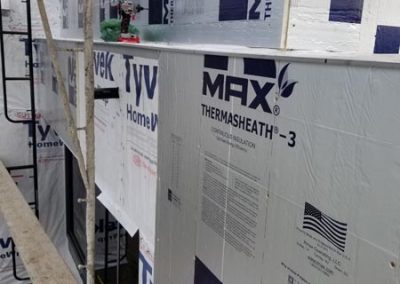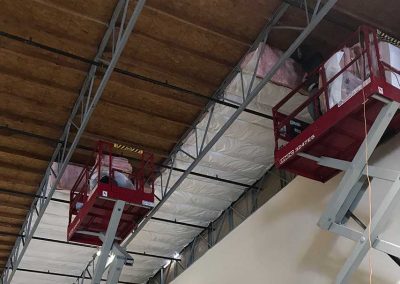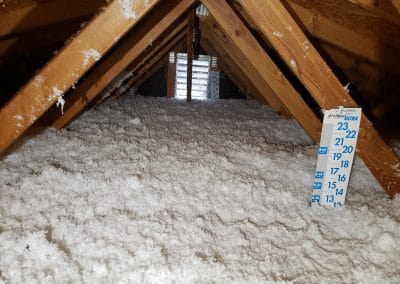FAQs
Check out our FAQ page for Frequently Asked Questions about Products, Services, and General Questions.
Why insulate the attic?
A significant amount of heat is lost through the roof, which makes the attic an important area to insulate.
What is the difference among fiberglass, rock and slag wool, cellulose, and foam insulation types?
Fiberglass is made from molten sand or recycled glass and other inorganic materials under highly controlled conditions. Fiberglass is produced in batt, blanket, and loose-fill forms.
Rock and slag wool are manufactured similarly to fiberglass, but use natural rock and blast furnace slag as its raw material. Typical forms are loose-fill, blanket, or board types.
Cellulose is a loose-fill made from paper to which flame retardants are added.
Foam insulations are available as rigid boards or foamed-in-place materials that can fill and seal blocks or building cavity spaces. Foams are also used in air sealing to fill gaps, cracks, or openings.
Reflective materials are fabricated from aluminum foils with a variety of backings such as polyethylene bubbles and plastic film. Reflective insulations retard the transfer of heat; they can be tested by the same methods as mass insulation and therefore assigned an R-value.
A Radiant Barrier is a building construction material consisting of a low emittance (normally 0.1 or less) surface (usually aluminum foil) bounded by an open air space. Radiant barriers are used for the sole purpose of limiting heat transfer by radiation.
What does R-Value mean?
R-value measures insulation’s resistance to heat flow. It can also be referred to as “thermal resistance.” The higher the R-value, the greater the insulating power. All materials having the same R-value, regardless of type, thickness, or weight, are equal in insulating power. The R-value of different insulating materials must be based on test methods established by the American Society of Testing and Materials (ASTM). Don’t forget that R-values are determined by material type, thickness, and installed weight per square foot, not by thickness alone. Insulation helps keep your home cool during the summer months and warm during the winter months.
How much will I save by adding insulation to the walls, ceilings, and floor of my home?
Insulation saves money, increases home comfort, and protects the environment by reducing energy use. According to the U.S. Department of Energy (DOE), the typical U.S. family spends close to $1,500 each year on energy bills. DOE statistics show that, typically, 44% of a homeowner’s utility bill goes for heating and cooling costs. DOE states that homeowners may be able to reduce their energy bills from 10% to 50% by taking certain steps. One of the major steps is increasing the amount of thermal insulation in their existing homes or purchasing additional insulation when buying new homes.
Unless your home was constructed with special attention to energy efficiency, adding insulation will probably reduce your utility bills. The amount of energy you conserve will depend on several factors: your local climate; the size, shape, and construction of your house; the living habits of your family; the type and efficiency of the heating and cooling systems; and the fuel you use. Energy conserved is money saved, and the annual savings increase when utility rates go up. Insulation upgrades also add to the value of your home.
How much insulation should my house have?
Most homes built before 1980 have inadequate insulation. If insulation between the joists of the attic floor comes only to the top of the joist, it probably makes sense to install more insulation.
What is formaldehyde?
Formaldehyde is a potentially harmful chemical compound used in many adhesives for plywood, particle board and other building materials, including some insulation.
For a green home do I need to have a high efficiency furnace, high efficiency appliances, and new windows?
It’s better to go low-tech according to Lane Burt, a building-energy expert with the Natural Resource Defense Council. Hire a pro to find all the leaks in your home and plug them up. This should cost much less than a new heating system, so you won’t be heating the outside of your home. The best energy efficiency measure you can take is insulating and air sealing your home, according to McKinsey & Company.
A March 2014 report by the American Council for an Energy-Efficient Economy looked at efficiency programs in 20 states from 2009 to 2012 and found an average cost of only 2.8 cents per kilowatt-hour – about one-half to one-third the cost of alternative new electricity resource options.
How long does it take for spray foam to cure?
Spray foam expands up to 100 times its original volume within 4-10 seconds. Independent studies indicate that with 24 hours’ active ventilation after spraying is completed, Icynene spray foam insulation is safely cured.
Where can I get information about Insulation?
- General: U.S. Department of Energy and Energy Star, a service of the U.S. Environmental Protection Agency
- Fiberglass, Rock and Slag Wool Insulation: North American Insulation Manufacturers Association (NAIMA)
- Cellulose Insulation: Cellulose Insulation Manufacturers Association (CIMA)
- Spray Foam: Spray Polyurethane Foam Alliance (SPFA)
Can insulation help dampen noise?
Yes. Insulation is an efficient way to reduce unwanted sound, and it is commonly used to provide a more comfortable and quieter interior environment. Insulation effectively reduces noise transmission through floors and through interior and exterior walls. A professional insulation contractor can help you select the proper insulation for your needs. Visit Owens Corning’s Quiet Zone for information on controlling noise.


